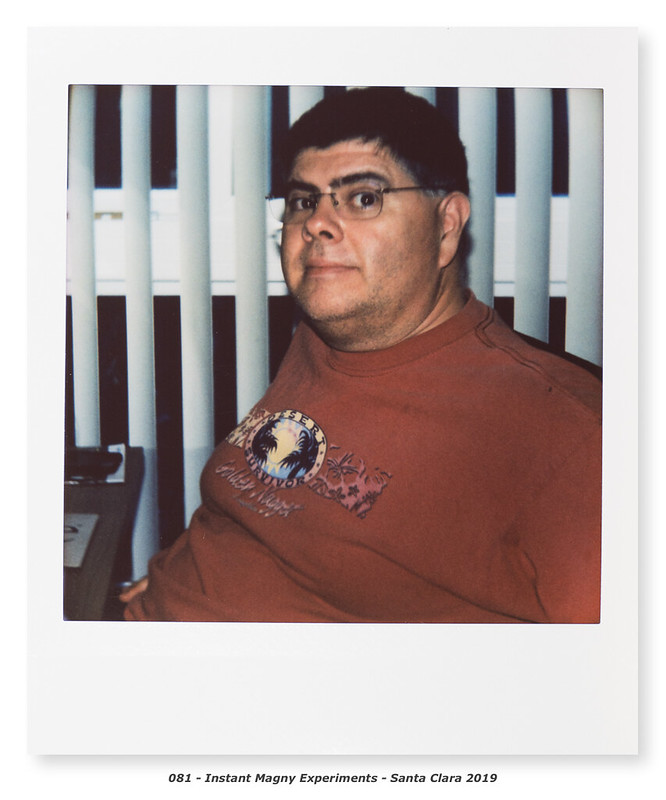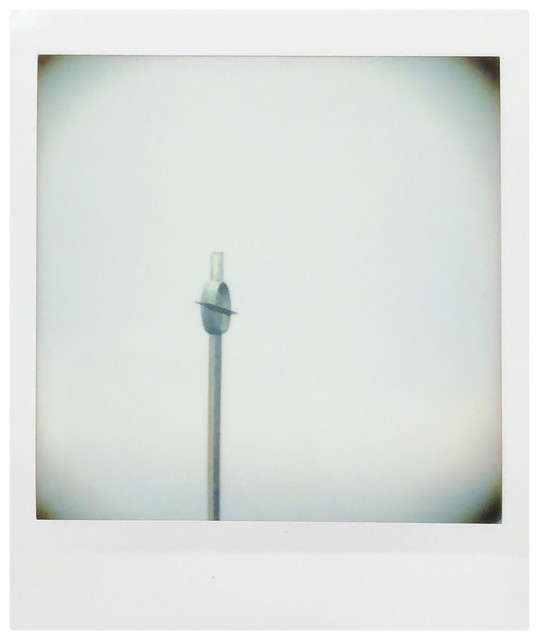... Instant Magny 35 Lens Experiments ...
... Instant Magny 35 Lens Experiments ...
I've spent some time playing with the Instant Magny 35 and the Instax SQ processing unit with the notion of adaptation to the Hasselblad. I've come to the conclusion that it really isn't particularly easy to adapt it without very radical surgery and alterations in how the processing unit works ... the film plane in the processing unit is some 10-11 mm behind the dark slide (itself 7 to 8 mm deep into the unit), and the dark slide controls the power on/off in the processing unit as well.
To modify it to work, I'll need to consider rejiggering the power control switch as well as completely cutting away most of the body of the processing unit, then adapting the dark slide and back mount from the Hasselblad-Polaroid back much deeper into the processing unit than I initially thought might be necessary.
I haven't given up on the idea but it's going to take more effort and time than I have for the moment, so it's back on the back burner.
🙂
Meanwhile, I played with a few different lenses as I relearned how to make photographs with the Instant Magny 35 fitted to my Leica M4-2. The behavior of the imaging varies quite a lot from lens to lens due to the optical match between the lens and the IM35's optical coupling. The size and position of a specific lens' exit pupil is the key thing ... SLR lenses (R lenses fitted on the R Adapter M to the M4-2), wide lenses which are inverse-telephoto designs, and longer lenses that naturally have a more forward exit pupil perform better than may typical RF lenses. Some examples...
The Voigtländer HyperWide 10mm f/5.6 works a treat on the M and CL digital cameras, but you can see that it's not the greatest optical match to the IM35 with lots of corner/edge darkening.

However, the usable portion of the frame is significant and you can make some lovely photographs with it. The extremely wide FoV is always fun, even cropped to square.
I made that exposure a few weeks back and then promptly forgot that the IM35 absorbs four stops of light, not two. Having fitted the Pentax-L 43mm f/1.9 I made these two exposures but they're two stops under... Doh!
The second of them had enough meat in it to stand a bit of post processing and come up with an interesting (if noisy) portrait with a graphic look to it.

I find the texture in it fairly pleasing but I'd have preferred a properly exposed original...
🙂
So I then fitted a flash unit and fired off a couple of tests adding one then two stops to re-discover that the total correction was four stops.
Essentially, set your light meter to ISO 50 and forget it is what that means, given the Instax SQ film's ISO 800. A flash for indoor shooting becomes pretty essential due to reciprocity factors with that low and effective ISO and a good portrait of my partner resulted:

The Pentax-L 43mm f/1.9 Special used in these last three frames is essentially an SLR lens optically built into a Leica LTM lens mount. It provides very even illumination across the field of view and is a good match to the Instant Magny 35's optical system. I was interested to see how it compared to the Color Skopar 50mm and 28mm lenses, so I picked a standard still life target and took an exposure with each of them, using ambient light and a small tripod for the extended exposure times.
Pentax-L 43mm f/1.9 Special:
Color-Skopar 28mm f/3.5:
Color-Skopar 50mm f/2.5:
These show that the very classic optical formulae of the Color-Skopar lenses that give them their extremely compact form factor simply puts the small exit pupil too close to the optical pipe in the IM35 and the illumination drops off very quickly past a small central area. However, you can have fun with that if you want to be creative and use it to aid in your framing and composition.
With the Color-Skopar 28:

With the Color Skopar 50:

I have to say: the IM35 on a Leica M is probably the most difficult combination to work with due to the RF lenses AND the lack of TTL viewing for focus and framing. If I had a Nikon FM floating around to play with, I'd have done better with that and some Nikkor lenses. Or if Nisnas made one for the Leica R 6.2...
Made a while back with the Super-Elmar-R 15mm f/3.5 adapted to the Leica M mount:

But what the heck? It's all for fun anyway, right?
😀
Oh yes: I want to point out that while these photos were all scanned and horizontally flipped (except the last) to achieve proper left to right orientation, and aside from the heavily processed portrait from the poorly exposed frame, they're all pretty much exactly as they came out of the camera. You can get quite nice results with this setup right out of the camera if you hit the exposure correctly!
enjoy!
G





















